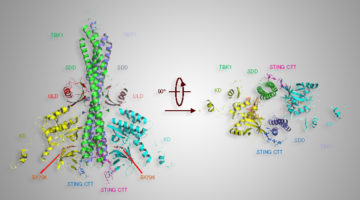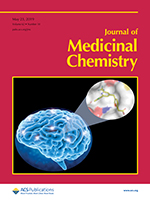X-rays allow researchers to map out the 3D structure of proteins relevant to diseases at the scale of molecules and atoms, and the ALS has been recalled to action to support research related to COVID-19, the coronavirus disease that has already infected about 2 million people around the world. Read more »
ALS Reveals Vulnerability in Cancer-Causing Protein
A promising anticancer drug, AMG 510, was developed by Amgen Inc. with the help of novel structural insights gained from protein structures solved at the ALS. AMG 510, which is currently in phase II clinical trials for efficacy, targets tumors caused by mutations in the KRAS protein, one of the most common causes of cancer. Read more »![]()
![]()
77Se NMR Probes the Protein Environment of Selenomethionine
Sulfur is critical for protein structure and function but lacks a sensitive isotope for nuclear magnetic resonance (NMR) experiments. This can be circumvented by substituting sulfur with selenium, which has an NMR-compatible isotope (77Se). To enable interpretation of the NMR data, the structures of five of protein variants were solved by x-ray crystallography to a resolution of 1.2 Å. Read more »
Discovery of a Covalent Inhibitor of KRASG12C (AMG 510) for the Treatment of Solid Tumors
KRASG12C has emerged as a promising target in the treatment of solid tumors; however, clinically viable inhibitors have yet to be identified. Here, researchers report on structure-based design and optimization efforts, culminating in the identification of AMG 510, a highly potent, selective, and well-tolerated KRASG12C inhibitor currently in phase I clinical trials (NCT03600883). Read more »
Genetic Blueprint for the Bioproduction of an Antidepressant Drug Candidate
A set of genes from a marine bacterium has been found to encode the biosynthesis of a promising antidepressant drug candidate. This work, which used the ALS to solve the structure of a key enzyme, could enable industrial-scale bioproduction of the drug in ways that are more efficient and sustainable than chemical synthesis. Read more »
A Citizen-Science Computer Game for Protein Design
Using the computer game, “Foldit,” nonexpert citizen scientists designed new proteins whose structures, verified at the ALS, were equivalent in quality to and more structurally diverse than computer-generated designs. The work shows the potential of using crowd-based creativity in the design of new proteins for fighting illness and disease. Read more »![]()
![]()
X-Ray Studies Key in Study Relating to Immune System-Signaling Protein
A grouping of amino acids—part of an important signaling protein, STING—plays an important role in activating the immune system. A study conducted through the Collaborative Crystallography program at the ALS confirmed how this part of the STING protein helps to bind a protein-modifying enzyme associated with autoimmune diseases and some cancers. Read more »
Self-Assembling 2D Arrays with de Novo Protein Building Blocks
Modular self-assembly of biomolecules in two dimensions (2D) is straightforward with DNA but has been difficult to realize with proteins, due to the lack of modular specificity similar to Watson–Crick base pairing. Here, researchers describe a general approach to designing 2D arrays using de novo designed pseudosymmetric protein building blocks. Read more »
Design and Synthesis of Selective Phosphodiesterase 4D (PDE4D) Allosteric Inhibitors for the Treatment of Fragile X Syndrome and Other Brain Disorders
PDE4D enzymes are important for normal brain function. Mutations have been asssociated with an ultrarare neurodevelopmental disorder, and genetic variation in PDE4D contributes to biological variation in human cognitive ability. Here, researchers report on novel PDE4D inhibitors providing potent memory-enhancing effects in a mouse model, with improved tolerability and reduced vascular toxicity over earlier PDE4 inhibitors. Read more »
Structural Characterization of a Synthetic Tandem-Domain Bacterial Microcompartment Shell Protein Capable of Forming Icosahedral Shell Assemblies
Bacterial microcompartments (BMCs) are subcellular compartments found in many prokaryotes, and they are of considerable interest for biotechnological applications. The BMC-H2 shell system constitutes a relatively simple generic building block that could be used to construct designed shells with a relatively highly tunable pore. Read more »
- « Previous Page
- 1
- …
- 3
- 4
- 5
- 6
- 7
- …
- 10
- Next Page »









